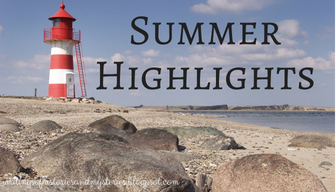Literary Classifications
In today’s article, I will be discussing types of books, genres, and descriptions. There are many types of literature, and I hope to provide a sufficient list.
I will start this article off with the differences between a book and a novel. Most people use this word interchangeably so I was somewhat surprised to find out that there are quite a few differences between these words. All novels are books, but not all books are novels. Refer to the chart below for the differences:
Also note these definitions from the online Merriam-Webster dictionary:
- Novel: “an invented prose narrative that is usually long and complex and deals especially with human experience through a usually connected sequence of events.”
- Book: Because this definition was so extensive, I decided to summarize it. A book is defined in many ways. A book is defined as “a set of written sheets of skin or paper or tablets of wood or ivory” and “a set of written, printed, or blank sheets bound together between a front and back cover.” The previous definitions define what we commonly think of a notebook. “A long written or printed literary composition” and “a major division of a treatise or literary work” refer to how we commonly use the word book or a collection of books. A book is also defined as “the script of a play” or “a book of arrangements for a musician or dance orchestra.” These definitions are used in the context of a musical theater.
There are two significant genres developed by two well-known authors. The Novel of Manners was perfected by none other than Jane Austen. A Novel of Manners is all about the social customs of a particular place at a particular time. And Jane Austen wrote about the social system of the British upper class during the Regency Era in her books Pride and Prejudice and Sense and Sensibility. The Historical Novel was refined by Sir Walter Scott. This type of novel uses a historical event or several historical events as the setting for that novel and creates fictional characters who are either directly or indirectly influenced by those events. Ivanhoe, Kenilworth, and The Talisman are examples of Historical Novels. Just to let the reader know, I haven’t read any of these novels; I just know about them. I have read a small section of both The Lay of the Last Minstrel and Marmion by Sir Walter Scott for my literature class, but I have never read anything by Jane Austen mostly because I have no interest in romance novels.
The short story is a piece of literature that is usually compiled into a book or novel. The Poirot Investigates by Agatha Christie and Billy Had a System by Marion Holland are examples of books that are a collection of short stories. I have read both of these books, and I recommend both as well. Short stories range up to about thirty thousand words in length, but they still develop a complete plot for the reader.
Before closing this article, I will discuss the epic, allegory, and fable. Because I cannot state it any better, I will share this definition from my World Literature textbook: “An epic is a long, narrative poem in elevated style which presents characters and action of heroic proportions (Anderson, 289).” Paradise Lost by John Milton, The Faerie Queen by Edmund Spenser, and Beowulf are British epics. The Epic of Gilgamesh, obviously another epic, was written in Sumer after the Great Flood. I have read a part of Paradise Lost (I enjoy Milton’s imagination and his way of conveying imagery), and a part of the Epic of Gilgamesh. But no one has actually read the complete manuscript of the Epic of Gilgamesh because the book originally came from clay tablets found in the library of the Assyrian king Ashurbanipal. If you ever get to read a copy of the story, keep in mind that translators added a couple of words here and there. Homer’s Iliad and the Odyssey are also epics.
Allegories use symbols to teach a lesson to the reader. One of my favorite things about literature is that it can help the reader to understand a godly worldview or moral. Pilgrim’s Progress by John Bunyan is a prominent allegory. This allegory explains the Christian walk to the reader as they follow the characters’ journey from the City of Destruction to the Celestial City. Christian is the main character of Part 1 and his wife, Christiana, is the main character of Part 2. Hinds’ Feet on High Places by Hannah Hurnard is another Christian allegory that follows Much-Afraid’s journey to the Kingdom of Love. I have read Pilgrim’s Progress and a portion of Hind’s Feet on High Places.
Fables are short stories designed to teach a moral usually through animals. The most well-known author of fables is Aesop. Everyone has probably read at least one of Aesop’s fables. French poet, Jean de La Fontaine, is also known for his book of fables.
I am ending this article with a quote by Archbishop James Gibbons that uses history to prove that the Bible is a book like none other: “What has become of those millions of once famous books which were written in past ages? They have nearly all perished, but amid this wreck of ancient literature the Bible stands almost a solitary monument, like the Pyramids of Egypt amid the surrounding wastes.”





Comments
Post a Comment